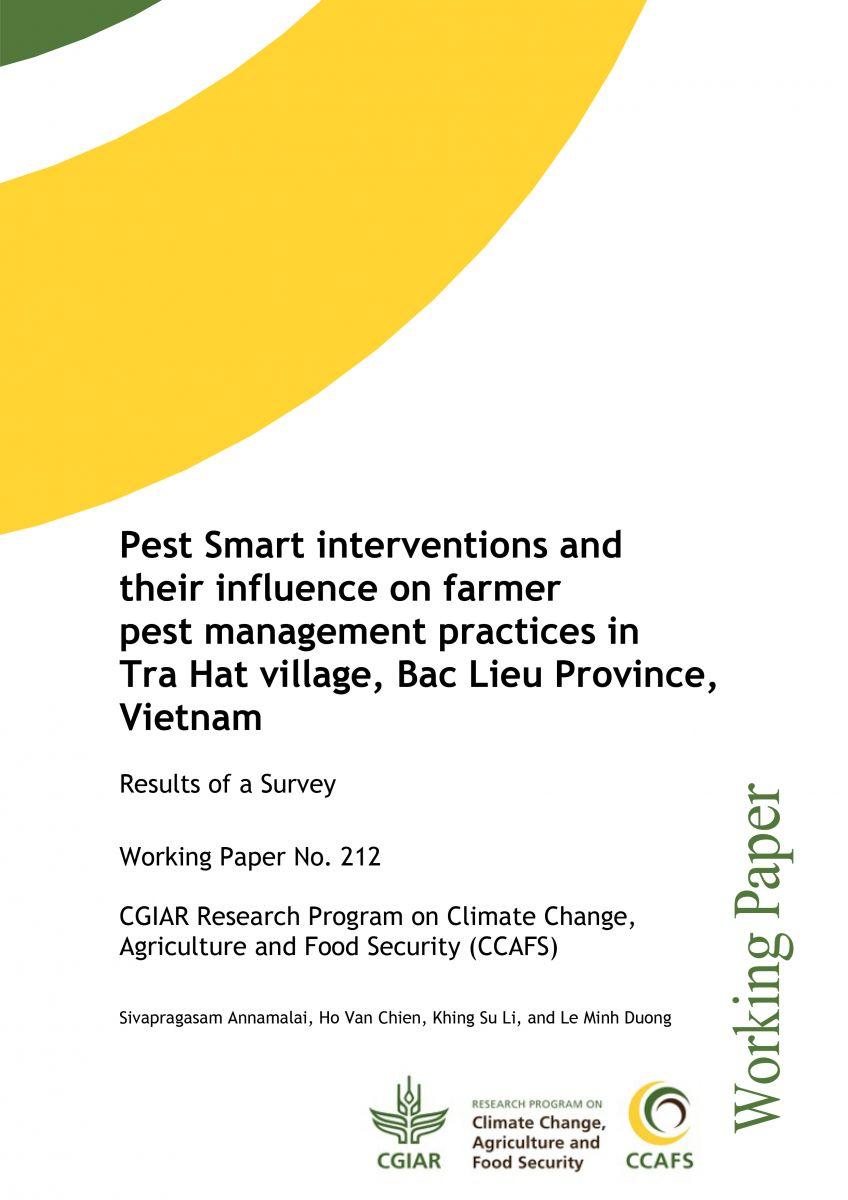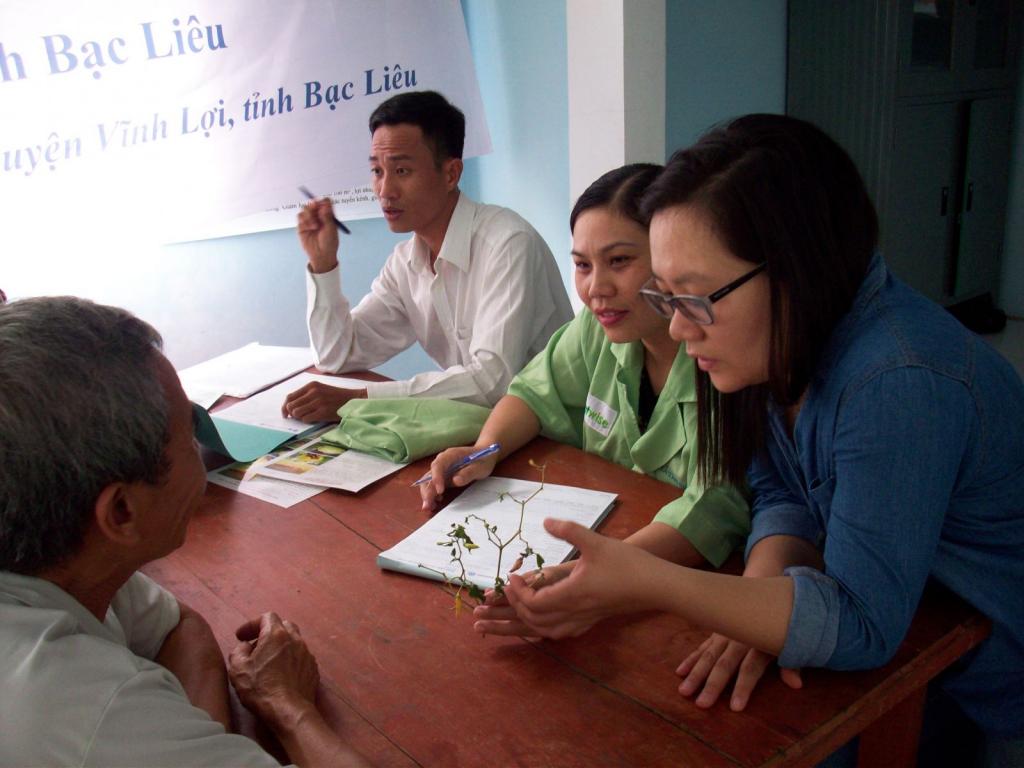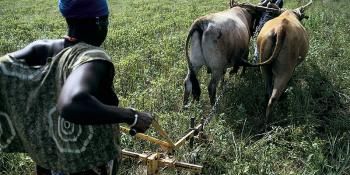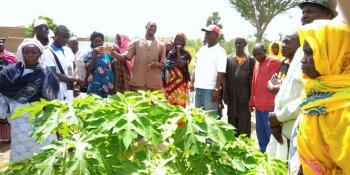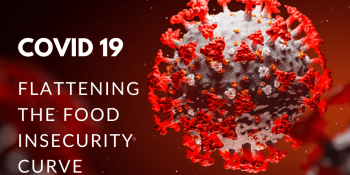Pest Smart interventions: Paving the way to pest and disease resilient rice farms

Farming communities in Vietnam achieved enhanced pests and diseases resilience through the adoption of ecological engineering practices and Plant Clinic consultations.
Many farmers in Vietnam and in countries across Southeast Asia depend on rice farming for their livelihood and sustenance, as it is seen as a key crop in this region. Numerous climate-smart agriculture (CSA) projects have already been implemented to help these farmers address the economic and abiotic problems causing yield losses. However, problems on pests and diseases (P&D) which account for 37% yield loss in rice farms have been dealt with to a lesser extent. This places livelihoods and food security of farmers, particularly in Tra Hat Climate-Smart Village (CSV) in Vietnam, at a great risk.
Climate change aggravates farmers’ problems on pests and diseases, for it can increase the uncertainties, frequency, and lengthen the duration of P&D occurrence on rice farms which is detrimental to farmer’s yield. With lack of knowledge on managing P&D and weak agricultural extension systems, many farmers in the area resort to increasing use of chemical pesticides, believing that this ensures increase in yield and completely solve the problem. Conversely, excessive use of pesticides creates more problems, as this leads to contamination of water sources, development of resistance to pesticides, and increased greenhouse gas emissions.
To address this problem, the CGIAR Research Program on Climate Change, Agriculture and Food Security (CCAFS) initiated the Pest Smart (PS) interventions with the goal of improving farmers’ resilience to P&D and minimizing the loss in yield farmers incur. Pest Smart interventions such as ecological engineering (EE), extension services through Plant Clinic, and education and awareness raising activities were implemented in Tra Hat CSV. These interventions were created to convince farmers to plant nectar-rich flowers on their rice bunds to lessen dependence on pesticides, provide free consultations with experts to solve farmers’ P&D problems, and convince them to sustain these practices.
Dr. Sivapragasam, the Regional Director of Center for Agriculture and Biosciences International Southeast Asia (CABI-SEA), led the implementation of Pest Smart activities which ran from September 2015 to November 2016. An assessment of the interventions’ effects on the farmers’ P&D management practices and attitudes were conducted through a pre-test survey done in July 2015 and a post-test survey held in November 2016.
Improved productivity for Pest Smart farmers
After 15 months of project implementation, the perceived yield loss caused by P&D has been reduced by 51%. Farmers’ dry yield has increased from 6.9 t/ha to 7.8 t/ha. The interventions have also succeeded in changing farmers’ pesticide spraying behaviour as shown by the reduced application of nitrogen fertilizer from 109.5 kg/ha to 93.3 kg/ha and reduced number of insecticide sprays to only 2.7 times per season. The significant decline in the amount and frequency of fertilizer applications in the majority of rice production stages are also indicators of the interventions’ success despite the short period of implementation.
Education campaigns aimed to discourage farmers on spraying 40 days after sowing (DAS) were also effective to some extent, for the earliest pesticide spray recorded after the interventions have changed from 19 DAS to 33 DAS.
Embracing the interventions
Positive changes caused by PS activities were seen not only on farmers’ practices, but also on their attitudes towards the interventions. For instance, many of the farmers now believe that planting nectar-rich flowers in their bunds attracts beneficial insects that can protect their crops. Fewer farmers believe that chemical pesticide is the most effective means of solving problems on pests.
Community leaders, civil society organizations, and local government officials benefitted from PS interventions. These stakeholders also gained knowledge and skills needed for supporting the development of farmers’ resilience to P&D and establishing partnerships which will provide an enabling environment for the upscaling of these interventions.
Local farmers of Tra Hat CSV visit Plant Clinic to learn about common pests, diseases and other problems affecting local crops. Photo: CABI
Improving sustainability
Sustaining the positive changes brought about by PS interventions entails continuation of the activities over a longer period of time. It is also important to overcome barriers in changing farmers’ beliefs that pesticide use ensures increased yield, and in convincing them to avoid spraying within the first 40 days after sowing to ensure project sustainability.
Promotion of the application of EE practices on vegetable crops—which are supplementary sources of income and food, can be achieved through the provision of additional demo plots. Moreover, developing information materials that can comprehensively explain to farmers the interconnection of climate change, P&D, the use of pesticides, and the sustainability of agro-ecosystems can also help sustain and upscale PS interventions.
Download the working paper:
Sivapragasam A, Chien HV, Khing SL, Duong LM. 2017. Pest Smart interventions and their influence on farmer pest management practices in Tra Hat village, Bac Lieu Province, Vietnam. CCAFS Working Paper no. 212. Wageningen, The Netherlands: CGIAR Research Program on Climate Change, Agriculture and Food Security (CCAFS).
Read more:
- “Pest-smart” to climate-smart in Southeast Asia
- Climate change puts Southeast Asia’s billion dollar cassava industry on high alert for pest and disease outbreaks
- Inclusion: A strategy for addressing climate change in Vietnam
Camille Anne Mendizabal is the junior communications specialist for the World Agroforestry Centre Philippines. She is also a communication consultant with the CCAFS SEA program.

